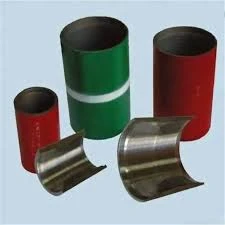- Afrikaans
- Albanian
- Amharic
- Arabic
- Armenian
- Azerbaijani
- Basque
- Belarusian
- Bengali
- Bosnian
- Bulgarian
- Catalan
- Cebuano
- Corsican
- Croatian
- Czech
- Danish
- Dutch
- English
- Esperanto
- Estonian
- Finnish
- French
- Frisian
- Galician
- Georgian
- German
- Greek
- Gujarati
- Haitian Creole
- hausa
- hawaiian
- Hebrew
- Hindi
- Miao
- Hungarian
- Icelandic
- igbo
- Indonesian
- irish
- Italian
- Japanese
- Javanese
- Kannada
- kazakh
- Khmer
- Rwandese
- Korean
- Kurdish
- Kyrgyz
- Lao
- Latin
- Latvian
- Lithuanian
- Luxembourgish
- Macedonian
- Malgashi
- Malay
- Malayalam
- Maltese
- Maori
- Marathi
- Mongolian
- Myanmar
- Nepali
- Norwegian
- Norwegian
- Occitan
- Pashto
- Persian
- Polish
- Portuguese
- Punjabi
- Romanian
- Russian
- Samoan
- Scottish Gaelic
- Serbian
- Sesotho
- Shona
- Sindhi
- Sinhala
- Slovak
- Slovenian
- Somali
- Spanish
- Sundanese
- Swahili
- Swedish
- Tagalog
- Tajik
- Tamil
- Tatar
- Telugu
- Thai
- Turkish
- Turkmen
- Ukrainian
- Urdu
- Uighur
- Uzbek
- Vietnamese
- Welsh
- Bantu
- Yiddish
- Yoruba
- Zulu
Understanding the Importance of Properly Seating Nipple Tubing for Optimal Performance
The Importance of Properly Seated Nipple Tubing in Fluid Transfer Systems
In the realm of industrial applications, the efficiency and reliability of fluid transfer systems are paramount. One critical component of these systems is nipple tubing, which plays a significant role in ensuring smooth fluid flow. The proper seating of nipple tubing is essential not only for the effectiveness of the system but also for maintaining safety standards and preventing leaks.
Nipple tubing, typically made from materials such as stainless steel or rubber, serves as a connecting point between different pipes or hoses in a fluid transfer system. Its design usually features a cylindrical shape with threaded ends that allow it to securely fit into other components. However, achieving an optimal seating of nipple tubing involves more than just screwing it into place; it requires careful attention to detail and adherence to best practices.
The Importance of Properly Seated Nipple Tubing in Fluid Transfer Systems
Moreover, properly seated nipple tubing enhances the overall efficiency of the fluid transfer system. When components fit together snugly, the flow of fluids can occur without obstruction, enabling the system to operate at its designed capacity. Conversely, improperly seated tubing can lead to back pressure or turbulence, which can cause wear and tear on pumps and other machinery, ultimately leading to costly downtime and maintenance.
seating nipple tubing

Inspection plays a crucial role in the process of ensuring that nipple tubing is appropriately seated. Regular checks should be conducted to identify any signs of wear, corrosion, or damage. Additionally, operators should be trained to verify the connections visually and physically for tightness and alignment before starting the system. This proactive approach can save companies significant amounts of money by preventing leaks and the need for emergency repairs.
Furthermore, advancements in technology have introduced tools and techniques that can assist in achieving proper seating of nipple tubing. For example, torque wrenches can ensure that connections are tightened to the specified level, minimizing the risk of over-tightening, which can also cause damage. Additionally, the use of gaskets or sealants can provide an added layer of protection against leaks, especially in high-pressure applications.
The consideration of environmental factors is also vital. Different fluids and operating conditions (such as temperature and pressure) can affect the materials used in nipple tubing. Understanding these factors can enhance the effectiveness of fluid transfer systems. Proper materials selection and regular maintenance will not only contribute to the longevity of the tubing but also help in achieving optimal performance.
In conclusion, the proper seating of nipple tubing is a critical aspect of maintaining efficient and safe fluid transfer systems. Ensuring tight and secure connections not only prevents leaks and product loss but also enhances system performance and longevity. By incorporating regular inspections, leveraging technology, and considering environmental factors, operators can vastly improve their systems' reliability and efficiency. As industries continue to evolve, understanding and implementing best practices in nipple tubing seating will be paramount in driving operational success.
-
Tubing Pup Joints: Essential Components for Oil and Gas OperationsNewsJul.10,2025
-
Pup Joints: Essential Components for Reliable Drilling OperationsNewsJul.10,2025
-
Pipe Couplings: Connecting Your World EfficientlyNewsJul.10,2025
-
Mastering Oilfield Operations with Quality Tubing and CasingNewsJul.10,2025
-
High-Quality Casing Couplings for Every NeedNewsJul.10,2025
-
Boost Your Drilling Efficiency with Premium Crossover Tools & Seating NipplesNewsJul.10,2025







